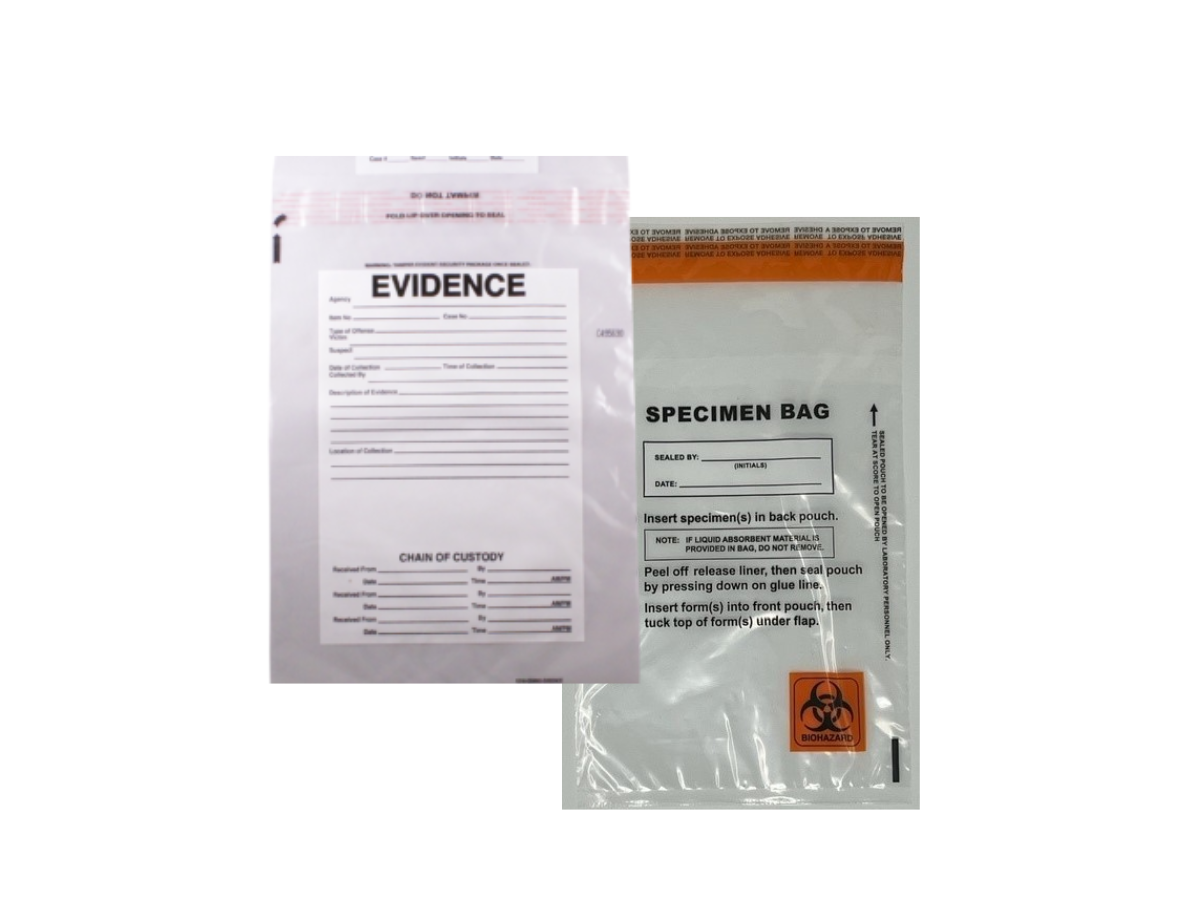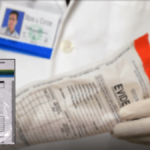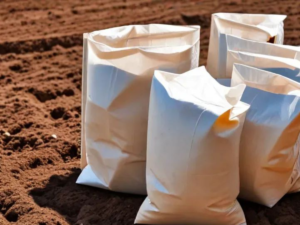Top Evidence Bags for Safe Biohazard Material Storage

Whether in medical facilities, research laboratories, or forensic settings, the need for reliable evidence bags to contain and protect biohazardous substances cannot be overstated.
These materials can be dangerous if they are not handled or stored correctly. They can harm people and the environment.
Hence, selecting the right evidence bags designed specifically for biohazard storage is essential. In this blog post, we’ll explore some of the top evidence bags available, ensuring safe containment and transport of biohazard materials.
Biohazard Specimen Transport Bags
Biohazard specimen transport bags are specifically designed for the safe and secure transportation of biohazardous materials.
These bags are usually made from strong materials that don’t break easily, like polyethylene or polypropylene. They are good at stopping liquids from leaking out and keeping things clean.
They are also equipped with a secure closure mechanism, such as a zipper or adhesive seal, to prevent accidental exposure.
Additionally, many biohazard specimen transport bags feature biohazard symbols and warning labels, ensuring clear identification of the contents and promoting safe handling practices.
Autoclavable Biohazard Bags
Autoclavable biohazard bags are designed to withstand high temperatures and pressure, making them ideal for sterilization purposes.
These bags are often used in medical and laboratory settings where biohazardous waste must be decontaminated before disposal.
Made from materials such as polypropylene or high-density polyethylene, autoclavable biohazard bags can be safely autoclaved along with their contents, effectively killing any harmful pathogens or contaminants.
They are available in various sizes and capacities to accommodate different types of biohazardous materials.
Tamper-Evident Biohazard Bags
Tamper-evident biohazard bags are equipped with security features that indicate if the bag has been tampered with or opened unauthorizedly.
These bags often feature a unique closure mechanism, such as a security seal or tamper-evident tape, which must be broken to access the contents.
Once the bag is sealed, any attempt to open it will result in visible damage or evidence of tampering, alerting users to potential security breaches.
Tamper-evident biohazard bags are commonly used in forensic applications and chain-of-custody protocols to maintain the integrity of evidence.
Leak-Proof Biohazard Bags
Leak-proof biohazard bags are specially designed to prevent leakage or spillage of biohazardous materials during storage and transportation.
These bags feature strong seals and seams that effectively contain liquids, blood, or other bodily fluids, reducing the risk of contamination.
Leak-proof biohazard bags are often used in healthcare facilities, laboratories, and emergency response settings where the safe handling of infectious materials is crucial.
Additionally, some leak-proof bags are also resistant to punctures, further enhancing their durability and reliability.
Heavy-Duty Biohazard Bags
Heavy-duty biohazard bags are built to withstand rough handling and harsh environmental conditions.
Constructed from thick, tear-resistant materials such as reinforced polyethylene or nylon, these bags offer superior strength and durability.
They are ideal for transporting large volumes of biohazardous waste or bulky items that require extra protection. Heavy-duty biohazard bags are commonly used in industrial settings, construction sites, and disaster response operations where rugged performance is essential.
Transparent Biohazard Bags
Transparent biohazard bags provide visibility of the contents, allowing for easy identification and inspection.
These bags are made from clear polyethylene or polypropylene materials that allow users to see what is stored inside without having to open the bag.
Transparent biohazard bags are often used in medical and laboratory settings where visual confirmation of the contents is necessary for safety and compliance purposes. They are also useful for sorting and organizing biohazardous materials in storage facilities or during transport.
Biodegradable Biohazard Bags
Biodegradable biohazard bags are environmentally friendly alternatives to traditional plastic bags.
These bags are made from biodegradable materials such as cornstarch-based polymers or recycled paper, which break down naturally over time without causing harm to the environment.
Biodegradable biohazard bags are ideal for disposal of non-infectious biohazardous waste, reducing the reliance on conventional plastic bags and promoting sustainability.
They are commonly used in healthcare facilities, research laboratories, and other settings where eco-friendly practices are encouraged.
How to Choose the Right Biohazard Material Storage Bag for Your Needs
Identify Your Requirements:
First things first – think about what you’ll be using the storage bags for. Are you transporting biohazardous specimens from one place to another? Or are you disposing of waste materials safely? Understanding your specific requirements will help you narrow down your options and choose the most suitable bag.
Check for Compliance:
Make sure that the storage bags you’re considering meet the necessary safety standards and regulations.
Look for labels or certifications indicating compliance with guidelines such as OSHA (Occupational Safety and Health Administration) or CDC (Centers for Disease Control and Prevention). Compliance ensures that the bags are designed to handle biohazardous materials safely.
Consider Material and Durability:
The material of the storage bag plays a significant role in its effectiveness.
Bags made from sturdy materials like polyethylene or polypropylene are durable and provide a reliable barrier against leaks and contamination.
Additionally, consider factors such as puncture resistance and tear strength, especially if you’ll be handling sharp objects or heavy items.
Evaluate Closure Mechanisms:
Pay attention to how the storage bags are sealed to prevent leaks and spills. Common closure mechanisms include zipper seals, adhesive closures, or heat-sealed seams.
Choose a closure method that offers a secure and tamper-evident seal, ensuring that the contents remain contained during transportation or storage.
Assess Size and Capacity:
Determine the size and capacity of the storage bags you need based on the volume and type of biohazardous materials you’ll be handling. Bags come in various sizes, ranging from small pouches for individual specimens to large bins for bulk storage.
Make sure to select bags that can accommodate your specific requirements without being too oversized or undersized.
Look for Additional Features:
Some storage bags come with extra features designed to enhance safety and convenience.
These may include biohazard symbols and warning labels for easy identification, leak-proof or puncture-resistant construction, and compatibility with autoclaving or incineration processes for sterilization.
Consider whether these additional features would be beneficial for your application.
Review User Feedback:
Before making a final decision, take the time to read reviews and feedback from other users who have experience with the storage bags you’re considering.
Their insights can provide valuable information about the bags’ performance, durability, and suitability for different applications.
Look for patterns or recurring comments that may indicate strengths or weaknesses of the product.
Compare Prices:
Finally, compare the prices of different storage bags to ensure that you’re getting the best value for your money.
While it’s essential to prioritize safety and quality, you also want to make sure that the bags fit within your budget. Consider factors such as bulk discounts, shipping costs, and long-term durability when evaluating the overall cost-effectiveness of the bags.
The Conclusion:
Selecting the right evidence bags for safe biohazard material storage is essential to protect public health and safety.
Whether transporting specimens in a medical laboratory or disposing of hazardous waste in a forensic investigation, using the appropriate bags can help minimize the risk of exposure to harmful pathogens and contaminants.
Share:
Get A Quick Quote
Social Media
Most Popular

How to Choose the Right Bullet Casing Evidence Bags

Choosing Sustainability: Biodegradable Bags for Soil

A Comprehensive Guide to Seed Packaging Methods
Categories
Tags
Related Posts
RFID vs. Barcodes for Evidence Tracking: A Side-by-Side Analysis
Automated identification technology (AIT), such as barcoding and radio frequency identification (RFID), is increasingly used by forensic labs and law enforcement to track and manage

How to Choose the Right Bullet Casing Evidence Bags
Bullet casings are one of the most common pieces of evidence collected from crime scenes, and their preservation is crucial for investigations. Choosing the right

Choosing Sustainability: Biodegradable Bags for Soil
In our quest for a greener planet, every little choice matters. And one choice that’s gaining traction in recent years is opting for biodegradable bags
